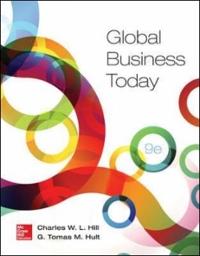23. Let's explore one of the reasons that Cobb-Douglas utility functions are oftentimes used in economic research. Assume we are studying an individual's preferences over food (f) and clothing (c). One of the more realistic features of Cobb-Douglas utility functions is that they represent preferences consistent with the following: I If an individual has small amounts of each good, in order to give up one unit of the good she has less of, she needs more of the other good. For instance, if an individual has 2 units of food and 5 units of clothing, she would need more than 1 unit of clothing to be willing to trade 1 unit of food. 0 If an individual has large amounts of each good, she views the goods essentially as perfect substitutes. Using the food/clothing example, she would be willing to trade food and clothing on an essentially constant basis if she has enough of each. Let's assume an individual's specific Cobb-Douglas utility function is U(f,c] =fl'l3cmancl analytically explore this result. A. Determine how much clothing the individual would be willing to trade for one unit of food at any f and c level [in other words, solve for the Marginal Rate of Substitution). B. Assume that the individual always has i fewer units of food compared to clothing. In other words, f=c-i . This will ensure we are looking at comparable bundles. Using this assumption, how will the MRS solved for in part (i) change as the level of clothing (and therefore level of food) increases? (HINT: what mathematical tool do we generally use to determine how a change in one variable leads to a change in another variable?) C. Still assuming that f=c-l, what will the MRS you solved for in part (i) converge to as (3) 1? Note this is equivalent to finding how much clothing the individual would be willing to trade for one unit of food when the individual essentially has no food. D. Still assuming that f=c-l, what will the MRS you solved for in part (i) converge to as (2) 60 3 Note this is equivalent to finding how much clothing the individual would be willing to trade for one unit of food when the individual has an extremely large amount of clothing and food. If you are not comfortable with limits, plug in increasingly larger values of c to see the pattern







